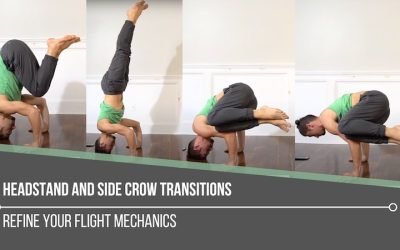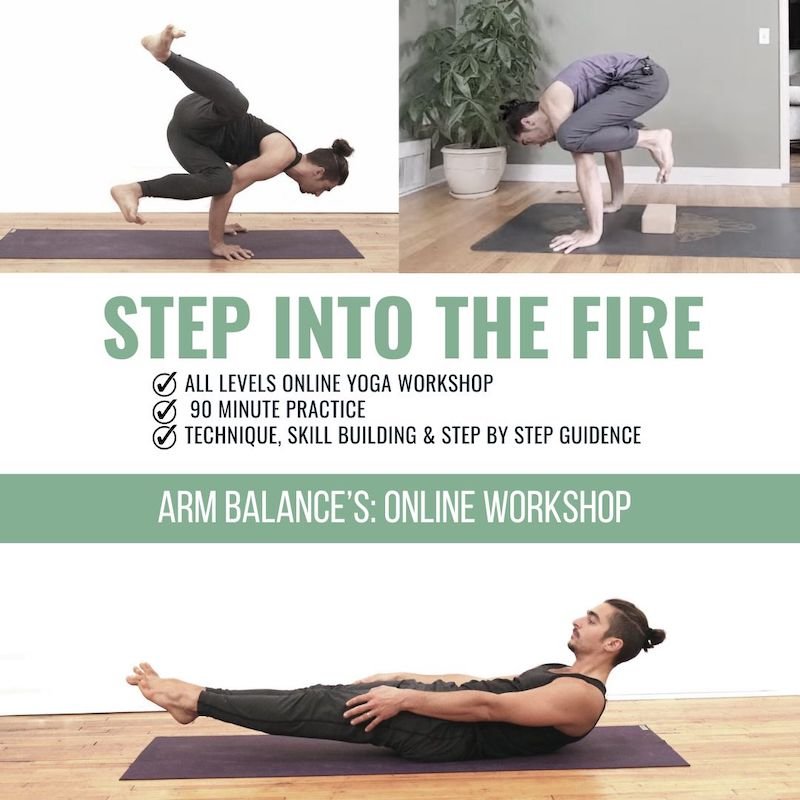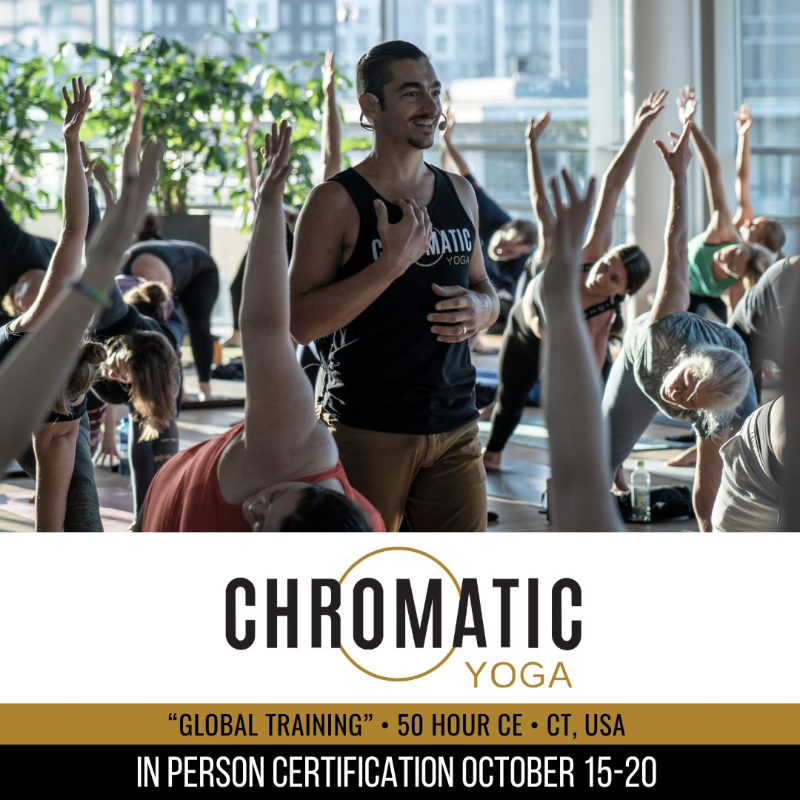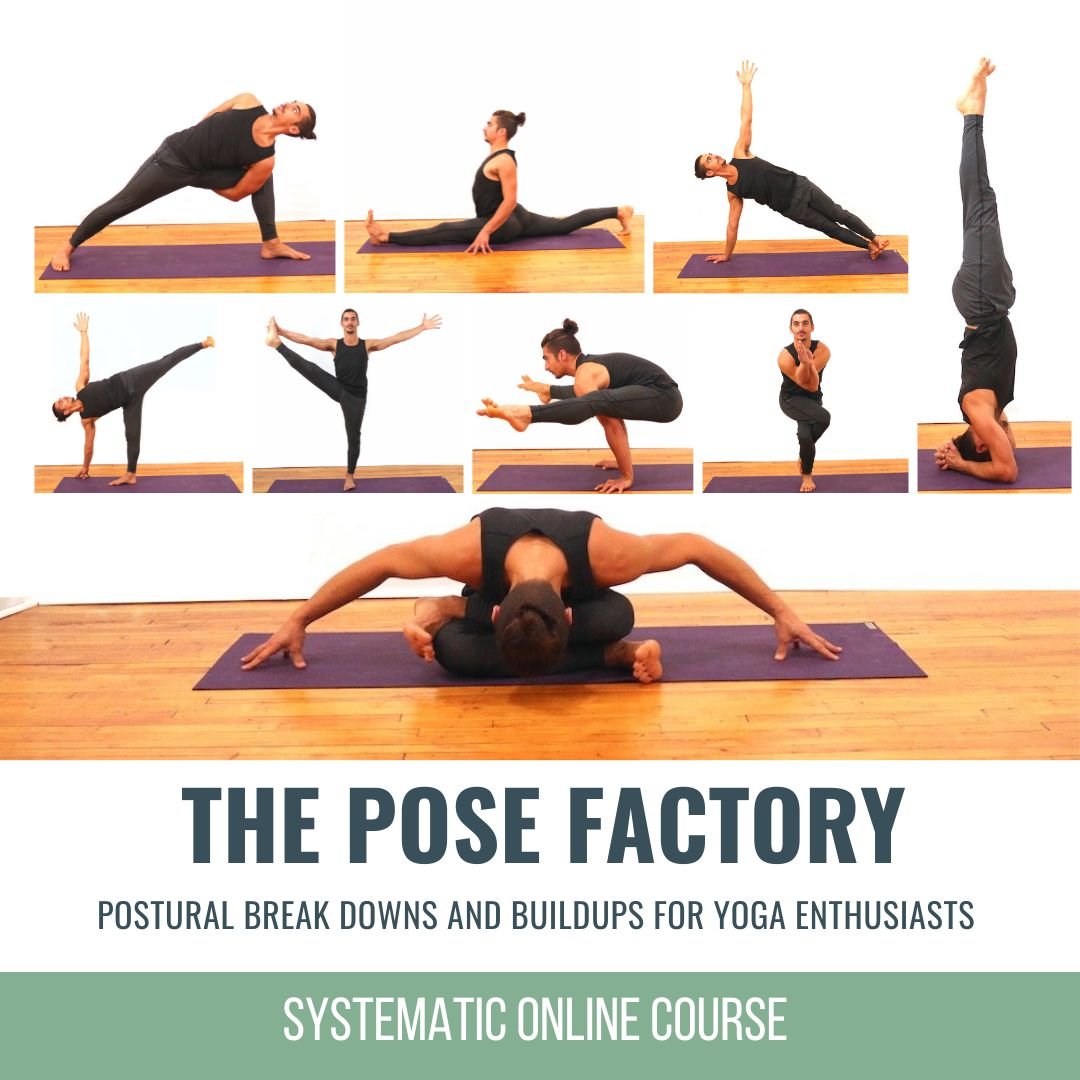Handstand ActionsLEAN, GRIP, PUSHHANDSTAND ACTIONS Handstand isn’t something we conquer in a single class, it’s a layered process that demands repetition and refinement. There are certain key handstand actions that are non-negotiable: lifting the shoulders up to the...
Mastering Bakasana
Mastering Bakasana
Crow Pose
MASTERING BAKASANA
We may never truly master a posture, but as we go on a journey of exploration towards our greatest potential within our asana practice, we most definitely become masters of our own awareness—cultivating the ability to discern where to go throughout the next phases of our journey, both on and off the mat.
As we delve into a posture like Bakasana, we become aware very quickly that we must gain a sense of our proprioception in the posture. Proprioception is essentially the understanding of where our bodies are in space. Because this is not necessarily easy, investigating the posture in different planes can assist with this understanding. In addition, applying technique is the ticket to the elevation of our abilities. The marriage between technique and proprioception will help us realize our potential in Bakasana.
ITALY RETREAT
REGISTRATION NOW OPEN
- Spa & Yoga Retreat
- Close to the coast line and beaches
- 2 spa days included (sauna, hot tub, Turkish bath)
- Morning and early-evening yoga with Matt
- Daytime free for adventures or to enjoy Ayurvedic massage and treatments
- Connect with incredible yogis from around the world!
- ALL LEVELS and all ages 18-85 appropriate
- Skillfully guided experience: yoga, meditation, breathwork
- Biomechanics and inspirational philosophy
- Welcoming and communal group of yogis!
MALASANA POSE POSITIONING
In today’s video, Matt demonstrates variations of Bakasana with techniques that help prepare our bodies for this challenging arm balance. The first variation we see is in a Malasana Pose position, which is essentially Bakasana in a squatted position. As Matt always teaches, such variations take some of the complexity out of the posture and help up home in on the foundations.
Here, we focus on placing the knees onto the outer arms and squeezing the knees in. Now, the element that can become more difficult when we implement the balance is the necessary spinal flexion. In this Malasana position, we practice rounding the back and extending the arms into the arm balance position, being mindful to keep the forearms parallel to the ground. This is how we begin to get more comfortable with proprioception.
WATCH THE VIDEO
MASTERING BAKASANA: PROPRIOCEPTION & ARM BALANCE TECHNIQUES
BAKASANA ON YOUR BACK
Bakasana on our back begins to promote increased activation in the body. Matt teaches that the objective here is to get the head and buttocks off of the ground. We are still squeezing the inner thighs into the outer arms in order to activate the adductors.
The benefit of practicing this variation is a better understanding of the tension and strength required for the balanced variation; Bakasana on our back is the next stepping stone in developing stability and control. As we move into the balanced variation, we rely on this strength and patterning.
200 HOUR ONLINE TEACHER TRAINING
GET CERTIFIED & DEEPEN YOUR YOGA PRACTICE
- Deepen your yoga practice
- Build confidence speaking in front of groups in person and online
- Learn foundational class structures and templates
- Learn techniques for a wide range of yoga postures
- Get certified and highly qualified to teach yoga
- Yoga Alliance Globally Recognized Certification Program
GET LIGHTER
When we start to implement the balance in Bakasana, we feel the heaviness of supporting our body weight. What we need to strive for is a lightness in the posture, which we access by starting with the foundation.
With the elevation of blocks under the feet, we can maneuver the body into deeper spinal flexion, with knees outside the upper arms and shoulders. Once the shape is created and we squeeze the legs in, we shift our weight forward. If we don’t have a good sense of proprioception, this is when the pose can fall apart. Matt brings our attention to shifting the weight out of our feet and into our hands. From here, we grip the hands more, which helps us feel more secure when leaning forward. This is where the lightness is achieved.
300 HOUR ONLINE TEACHER TRAINING
GET 500 HOUR CERTIFIED AS A MASTER TEACHER
Master your skill set as a teacher through refined techniques, anatomy, biomechanics, sequencing, philosophy, meditation techniques, theming, yoga business, and much more!
- Get 500 hour certified
- Learn anatomy, biomechanics, asana techniques
- Expand your teaching skills
- Masterful sequencing and verbal delivery
- Learn meditation and breathwork techniques
- Transformative tools: theming, dharma talks, satsang
KNOW EXACTLY WHERE YOU ARE
“Knowing exactly where we are” can be interpreted in many ways. It can easily refer to our own understanding of where we are on the journey of Bakasana, in other words, to knowing which variation we need to grasp before we move towards the next. As we progress through the course of exploration, it definitely also refers to proprioception: We need to know where we are in space in order to find the lift and lightness required for this arm balance.
Awareness enables us to adjust and refine with greater precision. With this understanding, we embrace the journey of our practice rather than an end goal. It’s through this deepened self-awareness that we can feel the subtle shifts and adjustments that lead to progress.
A few spots have opened up in Matt’s 2025 Italy Retreat! Secure your spot here.
The 200 Hr. Teacher Training: Click Here to See the Next Start Date
The 300 Hr. Advanced Teacher Training: Click Here to See the Next Start Date
Article by Trish Curling
Video Extracted From: Step into the Fire Workshop
ONLINE ANATOMY COURSE
- Accessible, exciting, and easy to learn
- Anatomy and biomechanics for yoga
- Appropriate for both teachers and students
- Learn joint alignment vs pose alignment
- Demystify yoga poses and transitions
- Release aches and pains
- Learn how to avoid common injuries
- Caters to all levels with modifications and props
- 20 hours Continued Education Credits with Yoga Alliance
- 20 hours toward Chromatic Yoga Certification and 300 Hour
- Lifetime access
Continue Learning
Handstand Actions
Handstand Mechanics
Handstand MechanicsINVERSIONHANDSTAND MECHANICS Stability, strength, and coordination come together in the pursuit of mastering handstand mechanics. One of the most critical foundations is internal rotation at the hip joints, which can aid with certain entries and...
Stable Sirsasana
Stable SirsasanaHEADSTANDSTABLE SIRSASANA Creating a stable Sirsasana is less about the final pose and more about the mechanics that lead us there. From weight transfer and spinal alignment to hamstring flexibility and shoulder engagement, each layer matters. Unlike...
Explore Hip Rotation
Explore Hip RotationSURYA YANTRASANAEXPLORE HIP ROTATION Hip rotation isn’t just an anatomical concept—it’s an open invitation to become more intimate with our body’s story. In yoga, we often live in lateral (external) rotation, especially in hip-opening postures....
Step Up Your Side Plank
Step Up Your Side PlankVASISTHASANASTEP UP YOUR SIDE PLANK Side Plank might look simple, but true proficiency starts in the details. One of the keys to refining the posture is learning how opposing muscle groups create an isometric contraction—a subtle engagement that...
Headstand and Side Crow Transitions
Headstand and Side Crow TransitionsPARSVA BAKASANAHEADSTAND AND SIDE CROW TRANSITIONS Mastery begins with mechanics, especially when it comes to headstand and side crow transitions. Each posture on its own demands control, coordination, and a deep understanding of...
THE FREE TECHNIQUE PACK
When You Subscribe, You Will Get Instant Access to
- the Technique Pack: 15 yoga pose breakdowns
- exclusive online course discounts
- exclusive blogs and videos















